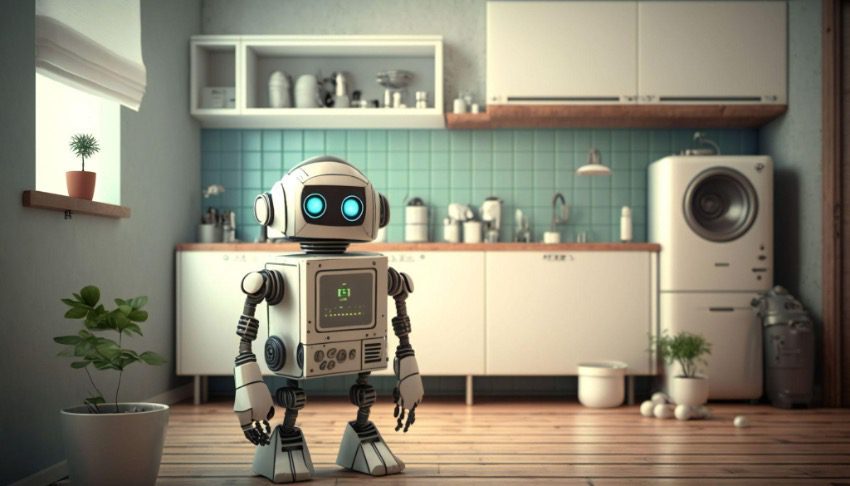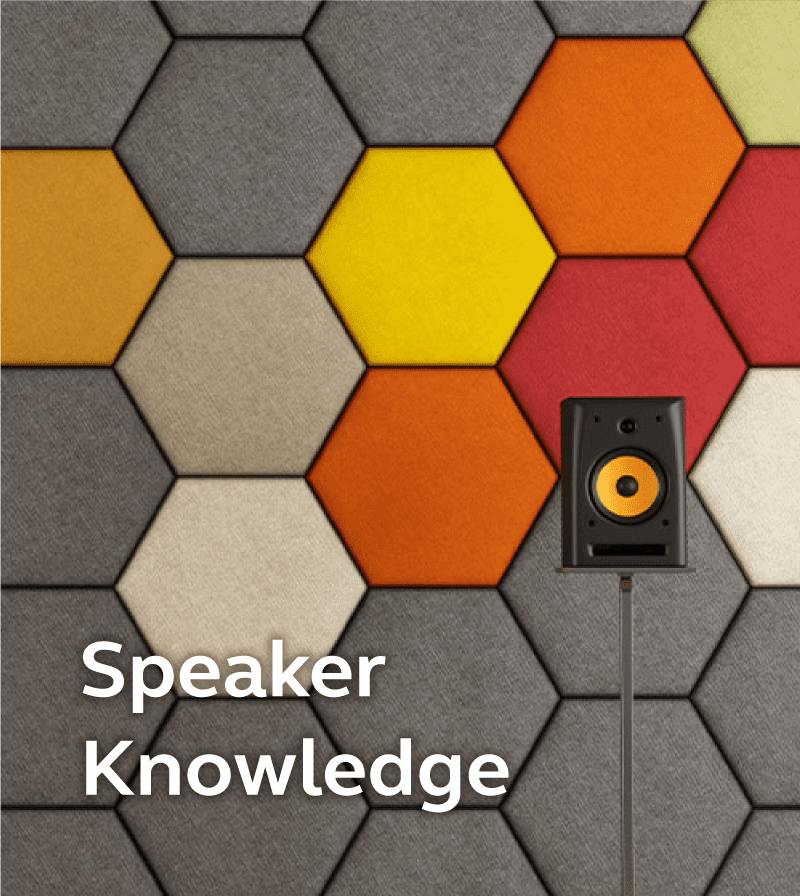
In 2022, the smart speaker market was only worth $10.34 billion, and experts predict it will grow fourfold in the next five years.
Fortune Business Insights’ 2020 forecast shows that the smart speaker market will reach $34 billion by 2028. However, considering the widespread adoption of large language models (LLMs) and the increasing ability of machines to analyze complex information, the market could grow even faster than this prediction! A new estimate by Brandessence Market Research and Consulting Private Limited raises the figure to $41.16 billion by 2028, with a growth rate as high as 34.69%.
The growth of the smart speaker market is driven by a variety of factors, such as the increasing maturity and diversification of smart home applications, the rising disposable income of people, or the popularization of multi-functional devices. In addition, advances in technologies such as automatic speech recognition and natural language processing have shifted the market towards AI-controlled speakers enabled by wireless communication media (such as Bluetooth and Wi-Fi), or speakers operated by virtual assistants through artificial intelligence.

The driving forces behind the growth of the speaker market - Intelligence: wireless connectivity, and multi-functionality.
Experts believe that three factors mainly drive the current trend in the smart speaker market:
- AI intelligence
- Wireless transmission capabilities (such as Wi-Fi and Bluetooth)
- Increased usage of speakers in multiple scenarios
These factors combine to make the products more robust and stimulate consumer demand, increasing people’s motivation to purchase.
Intelligence
Due to the rise of big data, various AI-related technologies have flourished in multiple fields to enhance the scope of AI applications. In particular, in the consumer electronics market, consumers are more focused on the interactive user experience of products. Therefore, speakers will play an essential role in the human-machine interface as a medium to receive commands and a channel to respond to work, providing consumers with unprecedented use enjoyment.
In addition, we also have the opportunity to see the application of AI in different scenarios, not limited to home entertainment but also in education, commercial markets, healthcare, automobiles, games, and other fields. In the future, consumer electronics products will inevitably become an important channel for connecting intelligent living, and the ability of speaker components to understand the semantics and tone of voice or sound will significantly affect users’ perception of the product experience.
For example, when students study online, poor connection or reception will seriously affect learning effectiveness. Therefore, it is essential to automatically adjust parameters such as volume, sound quality, and sound channels through acoustic technology to achieve a better experience.
In the future, through big data platforms, consumer electronics will be able to conduct data analysis, provide insights and information obtained from the Internet, and even provide advice in emergencies. This will be like having one’s own doctor, lawyer, dentist, teacher, and financial advisor in the living room, and ChatGPT, which has been recently popular, is anticipating this not-too-distant future.
Wireless
In the previous section on smart speakers, we also alluded to the importance of wireless technology in the market. Currently, speakers offer options such as Bluetooth, Wi-Fi, and AirPlay. These technologies rely on invisible transmission to transfer data, eliminating the need for tangled wires, reducing clutter, increasing the portability of speakers, and expanding their possibilities for spatial and other applications.
According to data, the global market for portable smart speakers is worth $6.5 billion and is expected to grow to over $27.5 billion in the next five years.
Multifunctionality
Finally, the trends in the smart speaker market have evolved due to constantly changing consumer demands. Six years ago, most people only made simple requests such as “Set a five-minute timer” or “Tell me today’s weather” on their devices.
Now, the situation is changing. People want their devices to act like experts in their homes, telling them everything they want to know about practically any topic. In the future, smart speakers will even be hidden in various household appliances and public settings, becoming deeply embedded in our lives and exchanging information with our devices via the internet, showcasing their unpredictable potential.
Six innovations that change the speaker market and life
Several technologies promise to change the smart speaker market considerably. The primary force driving these developments is LLM technology. This type of AI is more human-like than anything seen before and can understand context, giving its answers an air of common sense (something lacking from many other systems).
It’s also being supported by various other technologies that help make conversations more seamless. For instance:
- Natural Language Processing (NLP): makes machines easy to understand and interpret human language (this is very common in AI chatbots and similar interfaces).
- Predictive Analytics: this allows smart speakers to predict what users may need in the future and provide suggestions.
- Machine Learning: a superior technology used for making recommendations and predictions.
- Voice Recognition: a system that can learn the user’s voice and improve its response over time.
Computer Vision: future smart speakers may have ears and eyes, allowing them to identify problems in the user’s environment.
These technologies combined will bring tremendous shock and change to human life. For example, NLP and voice recognition help speakers understand users’ commands and intentions accurately, allowing devices to give the correct feedback.
In terms of output, new technology helps with understanding and analysis, bringing unprecedented human-machine experiences. For example, large language models like GPT-3, built on advanced machine learning algorithms and using unsupervised learning to train on vast amounts of text data such as books, articles, and websites, mimic the workings of the human brain.
During training, the model learns statistical patterns and relationships in language data, enabling it to make predictions and generate new text based on context. The scope of LLM’s capabilities is astonishing. They can perform language translation, summarization, Q&A, and generating original text.
These abilities are due to their ability to consider the context and meaning of words and phrases and the syntax and grammar of sentences. Then, they can use their language knowledge to generate compelling and meaningful outputs, providing services to users.
According to Adi Andrei, a member of the Oxylab advisory board, LLM has greatly improved artificial intelligence. He told Forbes that previous models had stayed at 65% accuracy for decades, but now, he says, a standard LLM model can achieve 85-90% accuracy in a reasonable time (milliseconds).
Five smart speaker applications in the future
With the popularity of artificial intelligence technology driving the development of smart speaker technology, future intelligent services will become more and more popular, cost-effective, and ubiquitous. So what areas might they be applied to?
Healthcare
For example, voice assistants may soon be able to provide home care and medical services. Smart speakers can integrate data from other medical devices and report it to community medical institutions anytime, reducing the waste of primary medical resources and increasing the reliability of home care. They can also remind users to take medication or follow other medical instructions at specific times.
Education
AI voice assistants can also become tutors. The ability of LLMs to convey the same basic information in different ways is a valuable teaching tool. For example, learners who cannot understand a paragraph in a textbook can have their AI smart speaker explain the concept differently.
Natural language processing will also enhance AI’s ability to understand requests. Students will be able to converse with voice assistants in the same way as human tutors and receive customized, helpful, and in-depth answers.
Business
The application of AI assistants in business is also happening. Microsoft is applying AI technology to completely change how users interact with computers entirely, further integrating it into smart speakers. As a result, users can get most of the recommendations they need for work by just speaking, greatly reducing the process of crawling through research and drafting projects for the first time.
Automotive
The application of smart speakers in cars is currently a battleground for many companies. From voice commands to in-car entertainment, smart speakers are indispensable in cars. Furthermore, autonomous driving cars will be the future trend, so how to correctly understand user commands and integrate road conditions to make judgments and respond to users is the blue ocean for automotive technology. In addition, the enclosed interior of the car is also a space for enjoying life, so various car manufacturers have introduced high-end audio equipment to their brands.
Home
The current smart home uses wireless transmission to connect all smart home appliances and devices (such as home appliances, door locks, cameras, speakers, etc.), allowing for real-time monitoring or switching control through mobile phones or tablets to achieve a real-time, convenient, and safe home environment. For example, after integrating smart speakers, even just talking directly to the door lock or home appliance can be integrated into personal devices, remotely controlling all devices in the home.
Conclusion
Smart speakers are not limited to a single visible device and will evolve in various ways to enhance our lives.




